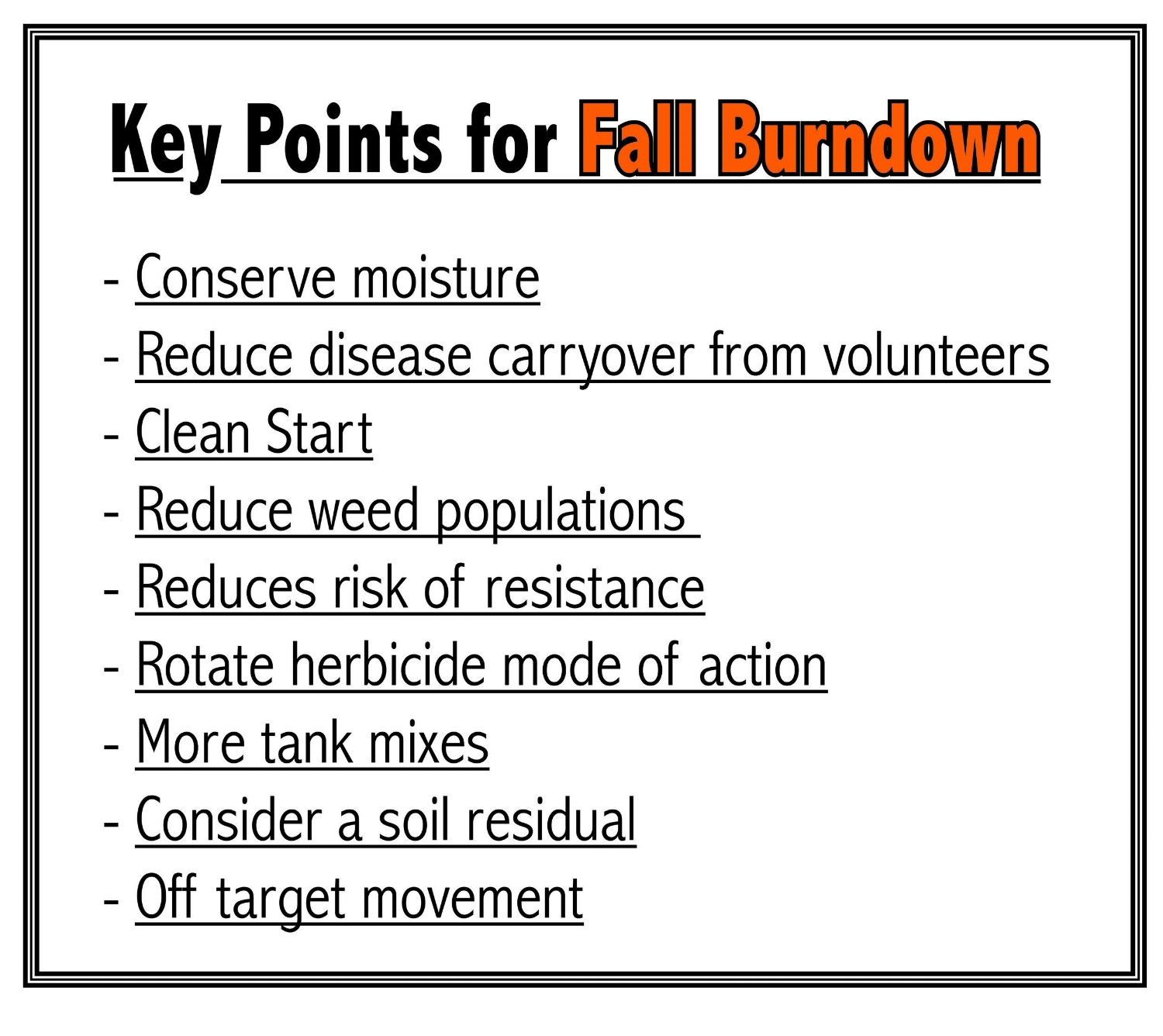Fall Burndown of Weeds with Glyphosate, Paraquat, 2,4-D, Dicamba, Glufosinate in Montana and the Pacific Northwest
Fall Burndown in Montana and the West
Fallow Spray Montana
Chemical fallow has become a major agronomic practice with the development of reduced tillage systems for better soil management of our farm lands. Weed control is an important consideration. This is especially important here in the West where conserving soil moisture is critical. The Fall spray season is here. It has been a hot, dry summer. Hopefully, September rains are here and more is on its way. What soil moisture we have or are going to gain we need to conserve. Whatever is green in the fields needs to be burned down—volunteers and weeds.
A couple of things:
1. We need to do more thinking about resistant weed management. Resistant weed management starts with keeping your use rates up so there are less escapes. Lower use rates help select for the more tolerant weeds to escape. These more tolerant weeds then reproduce and fill the seed bank with their more tolerant progeny. Mix up your herbicide modes of action. Rotate your general burndown herbicides between glyphosate and paraquat. You might also want to consider a soil residual herbicide. If you are going to burndown weeds with glyphosate, consider doing more tank mixes. A glyphosate mix or paraquat mix with a phenoxy (dicamba or 2,4-D).
Fall Burndown treatment.
2. Improve the performance of with the proper additives. Remember to add a hard water conditioner and surfactant to make the herbicides more effective. The Classic for glyphosate is ammonium sulfate (AMS) plus an NIS. However there are better, more convenient products on the market such as combo products that contain both a water conditioner and surfactant, like Full Load™ from AgraSyst. Many foliar applied herbicides are susceptible to hard water tie up, not just glyphosate. The Full Load™ type products have a more pronounced effect on many herbicides, such as paraquat, than does AMS. Full Load® and copy cat products have replaced much of the AMS in the tank with glyphosate and glyphosate tank mixes.
Make your herbicides work their best with Full Load™. It contains the premium hard water scavenger plus a fully blended surfactant system which includes tallow amine—Glyphosate’s favorite surfactant. Full Load™ works with almost all herbicides including: paraquat, glufosinate, glyphosate 2,4-D and dicamba.
Most growers want a clean field in the fall to protect moisture and reduce the amount of field work in the spring. Less weed means less chance of new resistant weeds and easier planting operations. A lot of times you can mix a downy brome herbicide or other sulfonylurea (SU) herbicides to help with a clean start next spring.
Full Load™ has the added benefit in that it does not increase phenoxy herbicide volatility like AMS and other water conditioners. In fact, Full Load® usually decreases phenoxy volatility by about 10%.
3. Off Target Movement--
For growers who are concerned with off target movement. Drift reduction agents can reduce the risk substantially. Drift-fiant™ is also an AgraSyst product and is about the best drift reduction and the most cost effective drift reduction agent available.
A big "off target" concern is coming to light in the Midwest—dicamba volatility. This years introduction of dicamba tolerant soybeans has shown a massive dicamba volatility issue. Full Load™ is one of the few water conditioners that does not increase the tendency for dicamba to volatilize. If you want to go with even more safety, Full Load Complete™ another AgraSyst product, might by your solution as it works like Full Load™ but has both drift reduction technology and volatility reduction technology built in. Full Load Complete™ will reduce dicamba volatility potential by around 40%.




